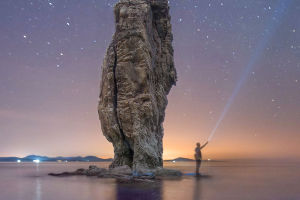Waterfalls are among the most majestic and captivating natural wonders, sculpted over millennia by the relentless forces of geological evolution.
From a geological standpoint, the lifecycle of waterfalls traverses a myriad of intricate stages, intricately intertwined with geological structures, hydrological dynamics, climatic variations, and biological influences.
In this exploration, we will embark on a comprehensive journey through each phase of the waterfall's journey, from inception to eventual dissolution.
1. Initial Stage: Geological Structures
The genesis of waterfalls typically unfolds amidst the dynamic tapestry of geological processes.
Through eons of tectonic upheavals and geological upheavals, the Earth's crust undergoes transformative shifts, giving rise to diverse landforms within river basins. These geological convulsions sculpt the landscape, forging towering cliffs, rugged gorges, and precipitous valleys—laying the groundwork for the emergence of future waterfalls.
2. Hydrogeological Stage: River Erosion
Guided by the inexorable forces of erosion, rivers etch their path through the terrain, carving deep channels and sculpting the topography.
The relentless flow of water, shaped by the undulating contours of the land, accelerates in some areas while decelerating in others. In locales of heightened flow, erosion intensifies, sculpting sheer cliffs and precipices. Conversely, downstream areas witness the formation of tranquil pools and meandering streams.
3. Formation Stage: Waterfall Formation
As rivers encounter abrupt elevation changes, a breathtaking spectacle unfolds—the birth of a waterfall.
Cascading over cliffs or plunging into chasms, the rushing waters embark on a vertiginous descent, creating an awe-inspiring display of mist and spray. The height and configuration of the waterfall are dictated by the steepness of the terrain and the vigor of the river's flow, culminating in a symphony of natural grandeur.
4. Continued Erosion: Retreat of the Waterfall
The formation of waterfalls is not a static process but rather a continuous dynamic one.
Over time, the erosive action of water continually alters the morphology of the waterfall. The impact of water on the cliff gradually erodes its base, causing the waterfall to retreat. This process may span thousands of years or even longer, ultimately leading to the demise of the waterfall.
5. Demise Stage: Erosion Equilibrium
Ultimately, the waterfall reaches a state of equilibrium—a delicate balance between erosion and stability.
As the cascade recedes to a certain threshold, the erosive forces of water reach a harmonious equilibrium with the geological substrate. While seasonal fluctuations may induce minor alterations in the waterfall's morphology, its overall retreat diminishes, heralding the denouement of its once-dramatic saga.
In summation, the lifecycle of waterfalls epitomizes the intricate interplay of geological, hydrological, and ecological forces—a testament to the enduring dynamism of Earth's natural landscapes. Through an understanding of these multifaceted processes, we gain a deeper appreciation for the sublime beauty and relentless resilience of nature's masterpieces.


